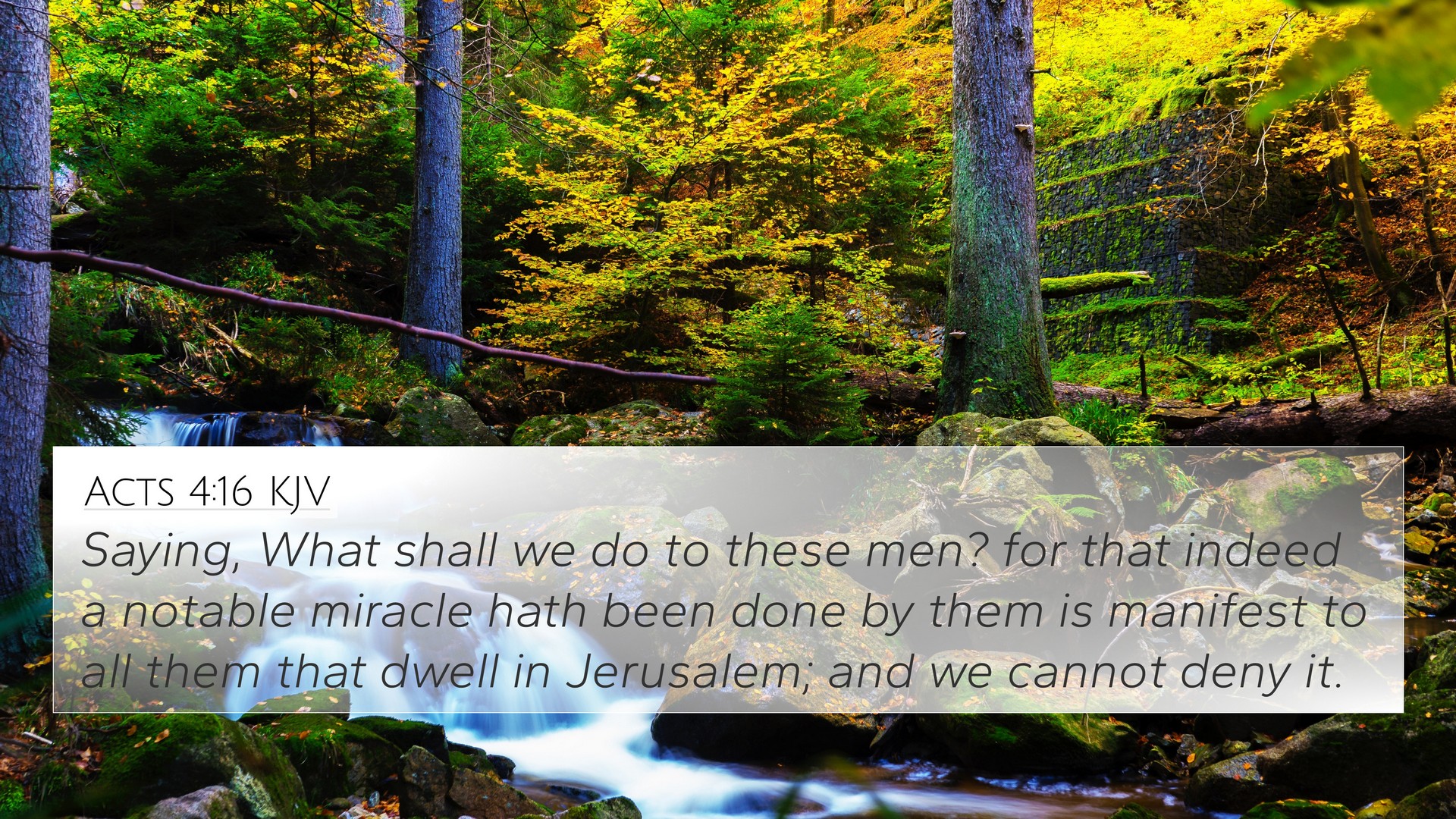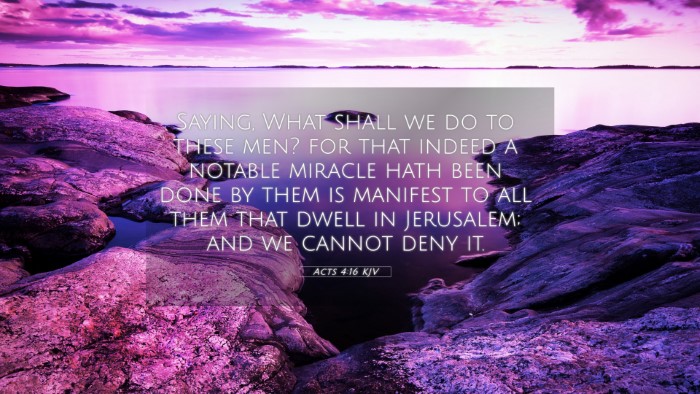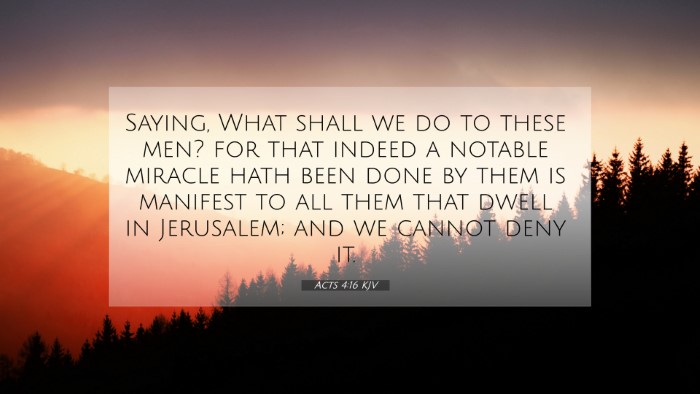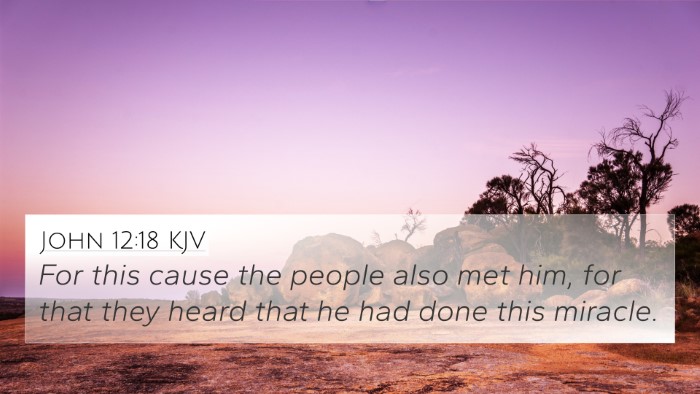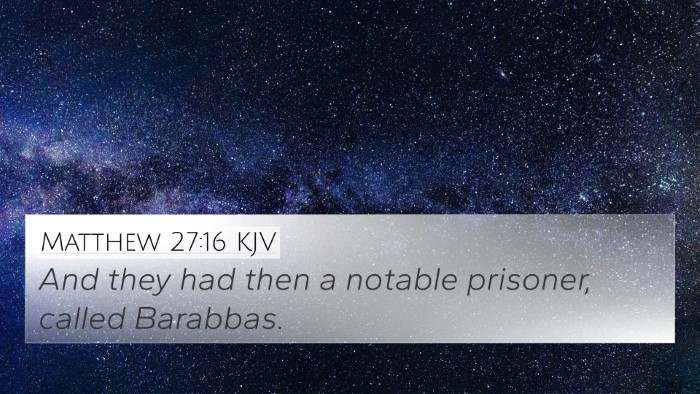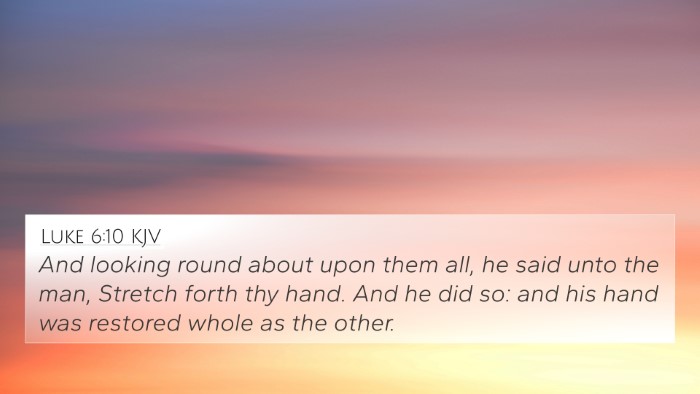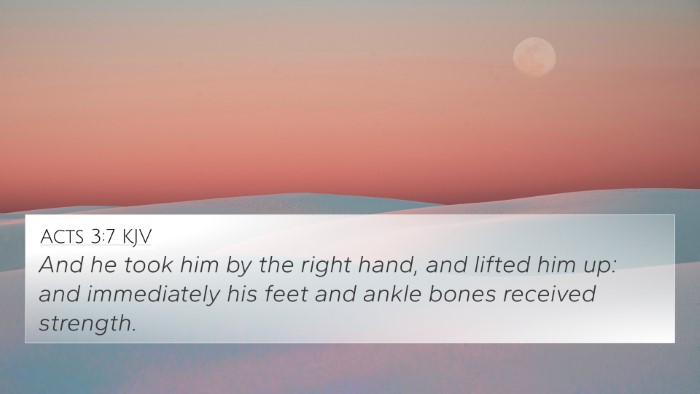Understanding Acts 4:16
The verse Acts 4:16 states:
"What shall we do to these men? for that indeed a notable miracle hath been done by them is manifest to all them that dwell in Jerusalem; and we cannot deny it." (Acts 4:16, KJV)
This verse occurs in a context where the apostles Peter and John had healed a lame man, which stirred significant attention among the people and religious leaders. This analysis will draw insights from public domain commentaries, including those by Matthew Henry, Albert Barnes, and Adam Clarke.
Summary of Key Insights
Contextual Background
In Acts 3, Peter and John encounter a crippled man at the gate of the temple, and through faith in Jesus Christ, they heal him. This miraculous event draws the attention of the crowd, and subsequently, Peter delivers a sermon about Jesus, leading to significant repercussions for the apostles.
Religious Leaders' Dilemma
According to Matthew Henry, the religious leaders of Jerusalem found themselves in a precarious position after witnessing the miracle. They recognized the undeniable power exhibited by the apostles, and yet they were threatened by the implication of Jesus' resurrection. They were thus faced with a choice: to acknowledge the miracle and the divine authority behind it or to dismiss it out of fear for their own positions.
The Miracle's Impact
Albert Barnes notes that the miracle performed was so remarkable that it couldn't be overlooked. Rather than denying it, the leaders wrestled with what actions to take in response. The term "notable miracle" indicates it was widely recognized, suggesting that the work of the apostles aligned with divine truth and validation of their message.
Denying the Undeniable
Adam Clarke emphasizes the irony in their statement about what to do. The leaders’ acknowledgment of the miracle while simultaneously plotting against the apostles illustrates a desperate attempt to maintain control despite the clear evidence of Jesus' power. This reflects the broader theme of rejection of truth when it conflicts with personal interests.
Connections to Other Bible Verses
Acts 4:16 has significant thematic and contextual connections to various other verses throughout the Bible. Here are some key cross-references:
- John 10:37-38 - Jesus refers to His works as evidence of His divine identity.
- Luke 5:24 - Jesus heals a paralyzed man, referencing His authority to forgive sins.
- Matthew 12:22 - A healing miracle that confounds the religious leaders.
- Mark 16:17-18 - Jesus speaks about miracles that would follow believers.
- Acts 3:12-13 - Peter explains that the healing was done in the name of Jesus.
- Acts 2:22 - Peter’s earlier proclamation about Jesus' miracles and wonders.
- 1 Corinthians 2:4-5 - Paul emphasizes the power of God shown through his ministry.
- Hebrews 2:3-4 - The early Church confirmed their message with signs and wonders.
- Revelation 22:17 - The Spirit and the Bride inviting all who witness God's works.
- Isaiah 35:6-7 - Prophecy of miraculous healings in the Messianic age.
Thematic Connections
The thematic connections in Acts 4:16 reveal a profound inter-Biblical dialogue about faith, miracles, and the response of religious authority:
- Faith vs. Doubt: The leaders' acknowledgment of the miracle contrasts with their disbelief in Jesus' resurrection.
- Authority of Jesus: The miraculous works stand as a testament to His divine authority over sickness and sin.
- Opposition to True Faith: This moment underscores the tension between following Christ and maintaining institutional power.
- Validation of Apostolic Authority: The miracles performed by the apostles authenticate their message and mission.
- The Nature of Miracles: Miracles serve both as acts of compassion and as signs pointing to deeper theological truths.
- Witnessing and Testimony: The public nature of the miracle calls attention to the necessity of witness and testimony in the faith journey.
Conclusion
In summary, Acts 4:16 highlights the clash between divine power and human authority. The undeniable miracle performed by the apostles not only becomes a focal point for their mission but also serves as a significant affirmation of Jesus' resurrection. As we explore these connections and themes, we find that understanding Biblical texts involves careful consideration of their context, the implications of divine authority, and the relational dynamics between believers and unbelievers, which can guide us as we engage in our own faith journeys.
